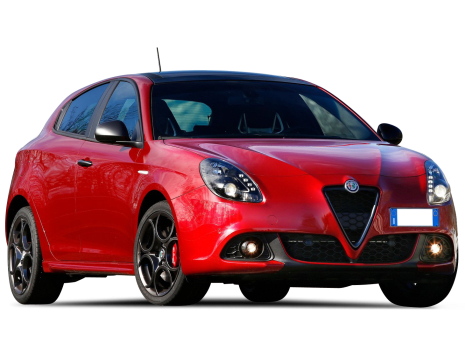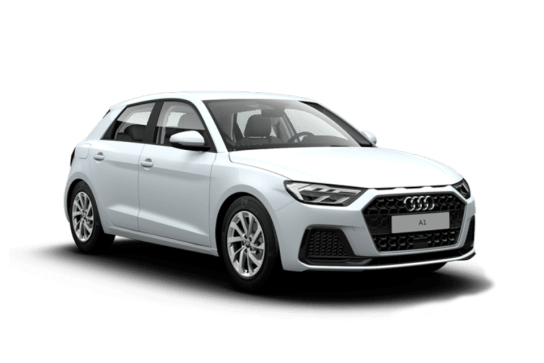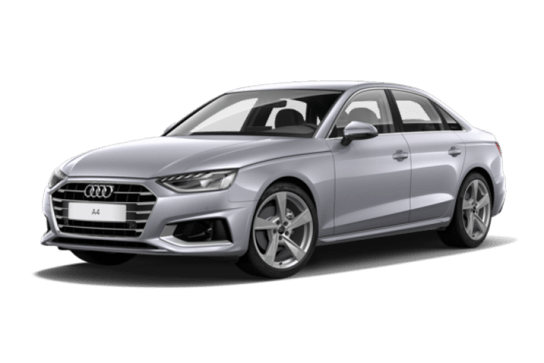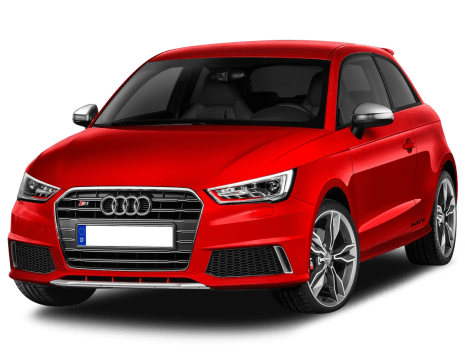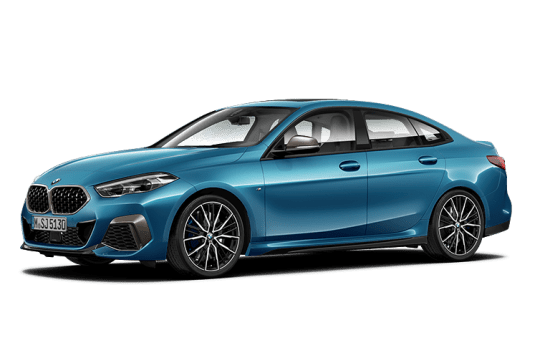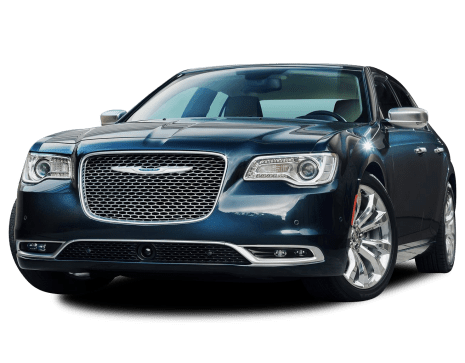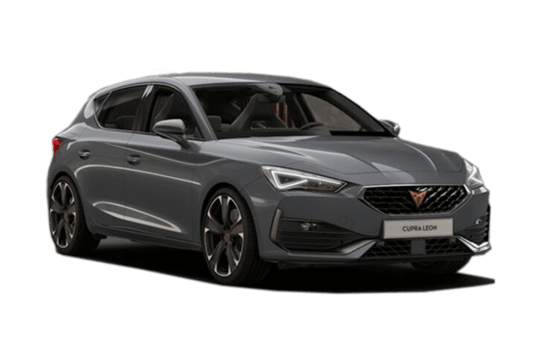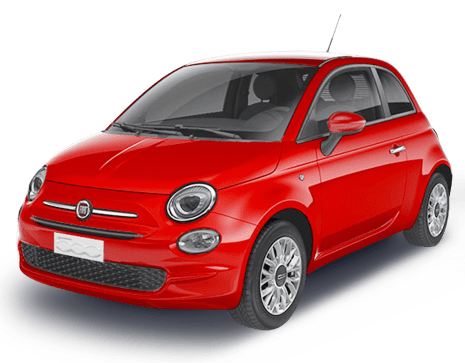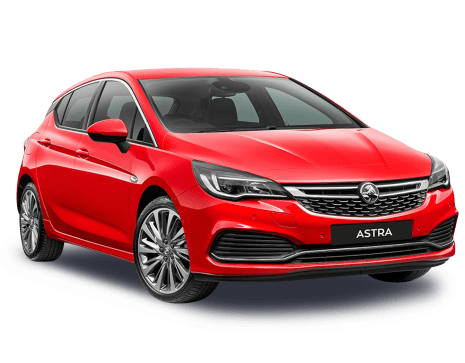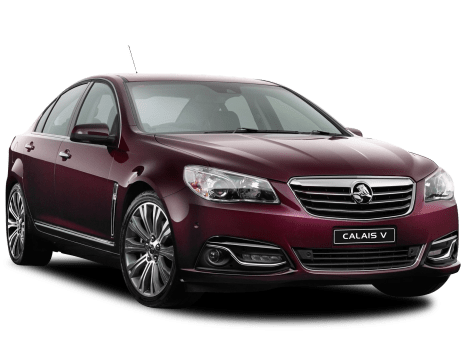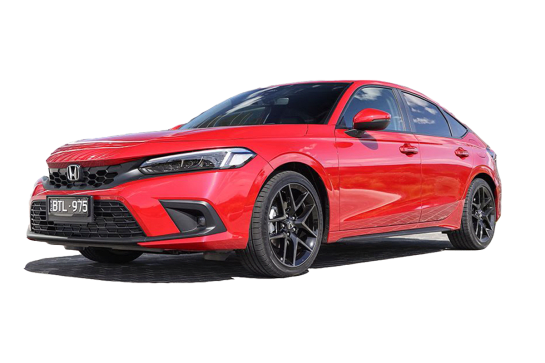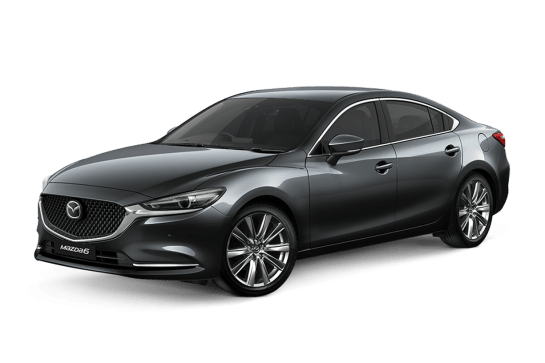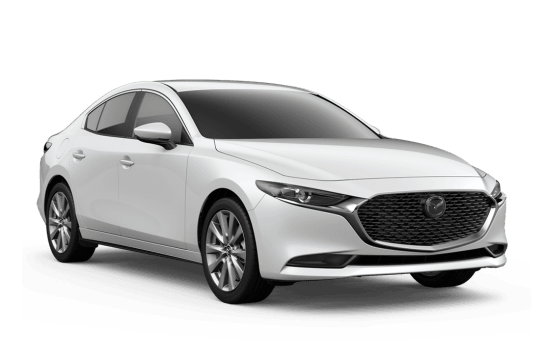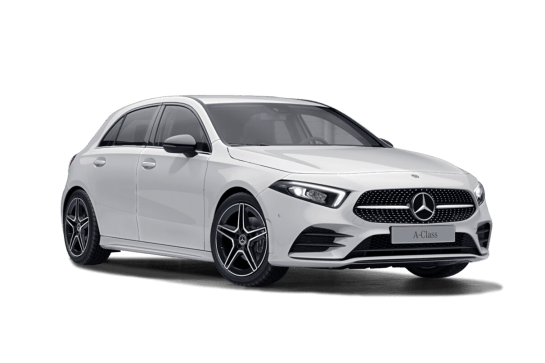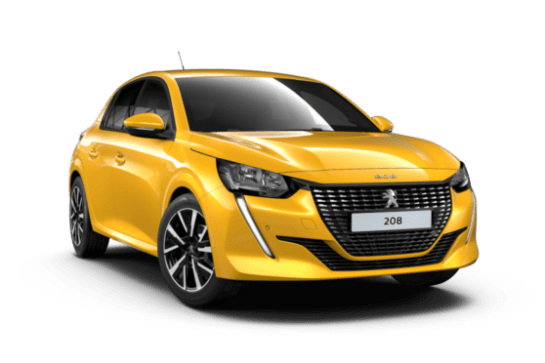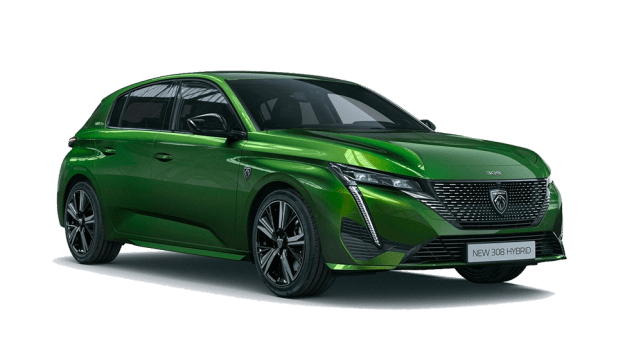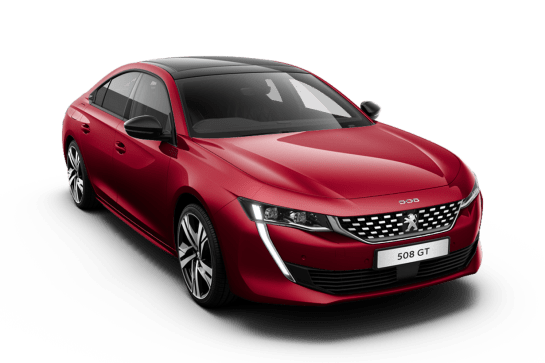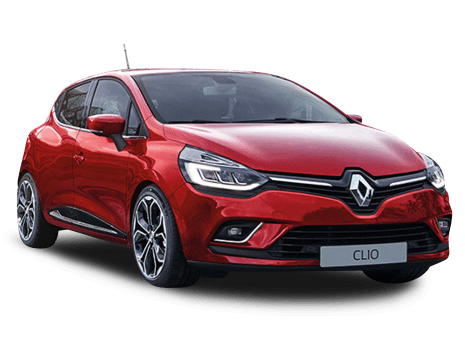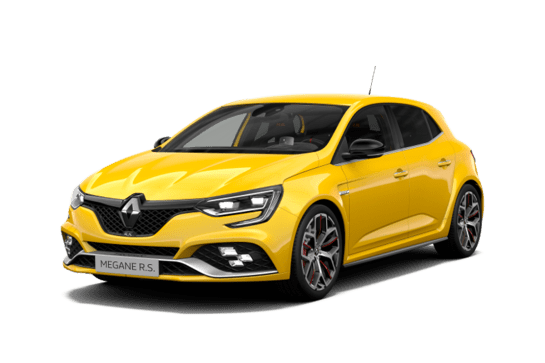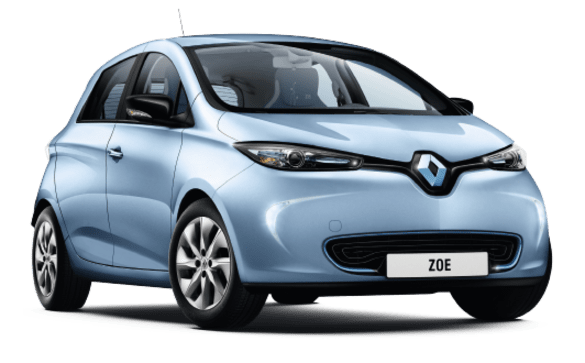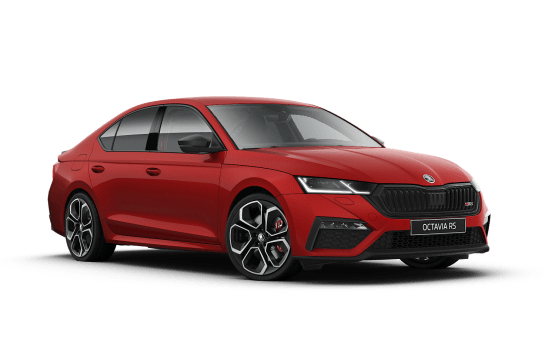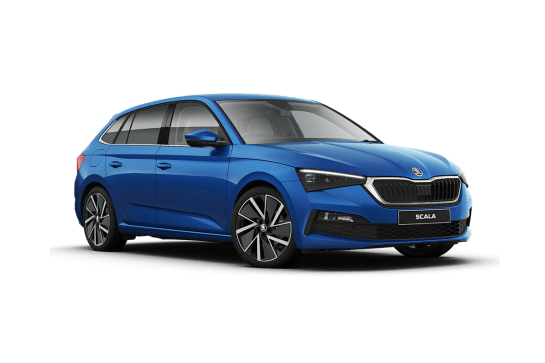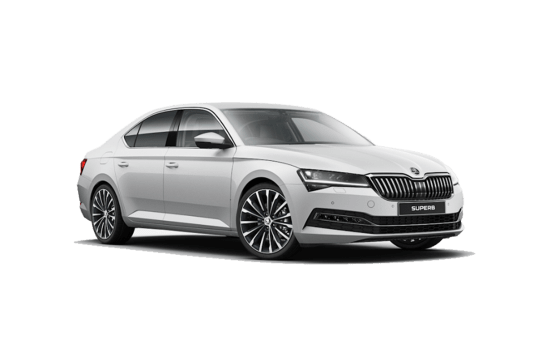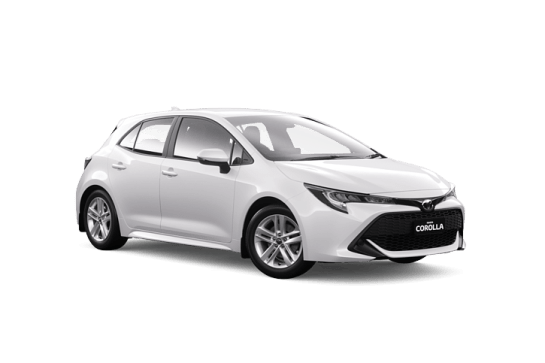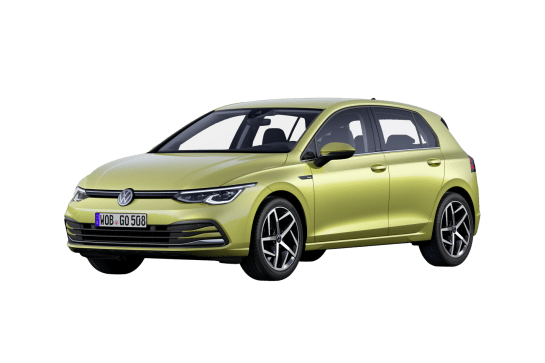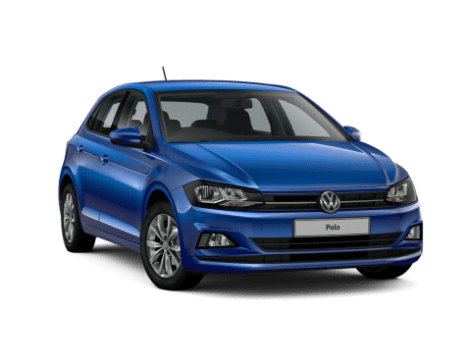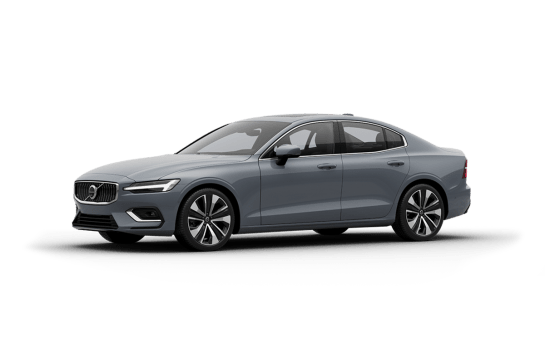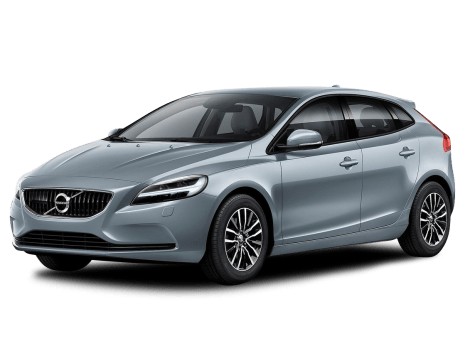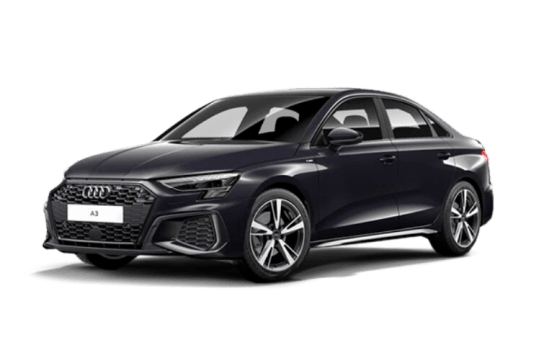
Audi A3 VS Abarth 124
Audi A3
Likes
- Quality look, quality feel
- Overall balance and driver involvement
- Proves there’s life in sedans and hatches
Dislikes
- Mild-hybrid interesting, but not a game-changer
- Active cruise extra cost in premium version. Should be standard
- Sportback looks don’t flatter the car
Abarth 124
Likes
- Distinct look and feel
- Challenging but rewarding
- Glorious Monza exhaust
Dislikes
- Annoying turbo-lag
- Tight cabin
- Pricey
Summary
Audi A3
If it was the original BMW 3-Series that invented the compact luxury car market segment all those years ago, then it’s probably fair to claim it was Audi’s A3 franchise that gave rise to the luxury small-hatch category.
On that basis, any new Audi A3 is news but, in the face of the SUV onslaught (including its own stablemate the Q3) the new small Audi has its work cut out for it.
With this update, there’s refreshed styling, a new interior layout and, for the launch of the new cars, two body styles, a conventionally styled sedan and what Audi calls the Sportback; fundamentally a five-door hatchback but with the German brand’s own flair plastered all over it.
Read more on Audi
- 2022 Audi A3 price and features: Australian pricing of new-gen Mercedes-Benz A-Class and BMW 1 Series rival creeps up
- Audi Q2 to be axed! BMW X2, Mini Countryman SUV rival to be discontinued as Audi heads further upmarket
- Audi Australia draws level with Mercedes-Benz, Lexus, Volvo, Jaguar Land Rover and Genesis with new five-year warranty for A1, A3, A4, A5, A6, A7, A8, Q2, Q3, Q5, Q7, Q8 and e-tron
As well as new connectivity and safety tech, the big news is the availability of a mild-hybrid driveline as well as a second powertrain option with more performance from a more conventional layout.
Interestingly, it’s that (mild) hybrid version of the A3 that represents the entry-level variant of the A3. A sign of the times? Perhaps.
As well as the two powertrains, there are two distinct chassis layouts, starting with a front-drive set-up and extending to the option of Audi’s Quattro all-wheel drive (AWD) system.
| Safety rating | |
|---|---|
| Engine Type | 1.5L turbo |
| Fuel Type | Premium Unleaded Petrol |
| Fuel Efficiency | 4.9L/100km |
| Seating | 5 seats |
Abarth 124
When you take on a classic you’d better get it right.
Which is why, back in 2016, when Fiat released a new 124, many an eyebrow was arched.
The original was an icon from the late 1960s, the golden age of roadsters. Styled by Pininfarina, it also oozed Italian swagger and, to top it off, its double overhead cam engine (modern at the time) helped introduce a swathe of innovations to the Italian automotive scene.
Even 50 years later, those old boots were looking awfully hard to fill, and the complexity and demands of today’s economy had Fiat working with Mazda to use its MX-5 chassis and Hiroshima manufacturing facilities to get it right.
A travesty? To some, maybe. But the MX-5 once aimed to emulate cars from the original 124’s golden era, and was a runaway success since, arguably making few missteps.
Thus, the apprentice has become the master. So, does today’s 124, which we only get in angry Abarth spec in Australia, bring something different to the ultra-refined roadster formula in 2019? Is it more than just a badge-engineered MX-5?
I took an Abarth 124 – the latest Monza limited edition – for a week to find out.
| Safety rating | |
|---|---|
| Engine Type | 1.4L turbo |
| Fuel Type | Premium Unleaded Petrol |
| Fuel Efficiency | 6.7L/100km |
| Seating | 2 seats |
Verdict
Audi A37/10
Producing a car that takes the end result beyond appliance status is no given in a world car-park dominated by SUVs. But Audi has, over the last few decades, shown it is very good at doing just that and the latest incarnation of its A3 stalwart backs that up.
While it might take a bit of mental gymnastics to understand why the base model gets the hybrid driveline, or why the more expensive variant costs more to option with adaptive cruise-control, the fact remains these are driver’s cars from a company that understands that concept.
Yes, the A3 is a relatively expensive way to arrive at a compact hatch or sedan, but if you value the journey as much as the destination, it will all make sense.
While the technical aspects of the 35 TFSI are interesting, the extra power and all-weather grip of the AWD 40 TFSI seem to be worth the additional dollars to us. The A3 has always been a sporty alternative, meaning the sportiest version is the one for us.
CarsGuide attended this event as a guest of the manufacturer, with meals provided.
Abarth 1247/10
The Abarth 124 Spider is a flawed but dramatic little car that should put a smile and a big, fat Italian moustache on any weekend warrior’s face.
As long as you don’t expect it to do much more than that in terms of its daily driving ability, it hits the nail on the head as a spicy alternative to the well-rounded MX-5 formula.
Whether it hails from Hiroshima or not is irrelevant. Its ancestors would be proud.
Now, if only all of them had this Monza Edition’s glorious exhaust…
Would you ever pick the Abarth 124 over an MX-5, 86, or BRZ? Tell us why or why not in the comments below.
Design
Audi A36/10
It’s actually refreshing in 2022 to see a carmaker putting such an effort into something that isn’t an SUV.
That Audi has bothered with two distinct bodies and two equally distinct drivelines is also one for the books, really.
Technically, the mild-hybrid driveline as seen in larger Audis in recent years is probably the highlight of the new A3, and even though it doesn’t compare with a conventional petrol-electric hybrid, it demonstrates Audi’s attention to detail.
The same goes for the digital instruments which allows the driver to tailor the information displayed at any given time. Need a city map more than you need a tachometer at a particular point in you journey? That’s where this technology comes into its own.
Abarth 1248/10
I love the way the 124 looks. The more you pore over its small frame, the more you discover how different it is to its MX-5 counterpart.
It’s angrier. It’s more beautiful, and it’s definitely more Italian.
References to the original have been tastefully applied without transforming it into bloated caricature. These include the dual indents on the hood, the rounded-out light clusters, and the squared-off rear.
From there it goes beyond the original 124 and seems to take influence from contemporary Italian designs. I would argue there’s more than a little modern Maserati in this car’s tough wheelarches, scoopy mouth, rear light fittings and alloy wheel design.
The quad-exhaust pipes (actually just two tailpipes with four apertures) is arguably overkill, but adds a bit of extra aggression to this car’s rear. I’m not a fan of the oversized Abarth badgework on this car’s nose and rear. It removes a bit of subtelty from the equation, and the one on the bootlid is entirely unnecessary.
I’d also argue our test Monza Edition car looks best with its white paint and red highlights throughout. It’s also available in red and black.
The inside breaks the illusion a little. I’d argue not enough has been done to differentiate the 124 from its MX-5 roots here. It’s all Mazda switchgear.
There’s nothing wrong with that switchgear, of course. It’s well built and ergonomic, but I’d love to have something different to mix it up here. A Fiat 500 steering wheel… some switches that look cool but barely function properly… Just a little more of the Italian personality that’s so well expressed on the outside…
The seats are unique to the Abarth and are lovely, and the red highlights carry through them onto the dash and wheel stitching. The Monza edition has the official logo of the famed Italian circuit between the seats, with the build-number etched on it.
Practicality
Audi A36/10
Although it’s a compact car externally, clever packaging means there’s ample space inside. Even a tall-ish rear-seat passenger can sit behind a tall-ish driver, and the sculpted rear seat-backs help make that possible.
The only complaint would be that the dark headlining material makes the interior a bit of a cave at times.
Paying more for the 40 TFSI gets you extra cargo nets on the front seat backrests and luggage area, 12-volt sockets in the rear seat and boot. Both versions get floor mats and a centre arm-rest front and rear.
The rear seat in either is split 40/20/40 for a range of possibilities, with the Sportback offering 325 litres (VDA) for the Sportback quattro models, and 380L (VDA) for the 2WD models and its boot capacity is increased to 1145L (VDA) with the rear seat folded flat. The luggage space in the sedan is 390L (VDA) for the quattro AWD version, and a more capacious 425L (VDA) for the FWD model.
Abarth 1246/10
When it comes down to a practicality score, it’s only fair to compare a car like this to its direct competitors. A sports car like this is never going to take on a hatch or SUV in the practicality stakes.
Even so, and just like the MX-5, the Abarth 124 is tight on the inside. I fit inside it perfectly, but there are problems.
Legroom is super tight for me at 182cm tall. I had to adjust to having my clutch foot at an angle, otherwise I’d smack my knee on the bottom of the steering wheel, a problem that also makes this car tough to clamber into. The handbrake takes up a massive amount of room in the limited centre-console space, and as to storage in the cabin? You may as well forget it.
There’s a tiny flip-up binnacle in the centre, shallow enough maybe for a phone and nothing else, a slot under the air-conditioning controls seemingly designed expressly for phones, and two floating cupholders between the seats.
There’s no storage in the doors, nor is there a glovebox. You do get a rather large storage area behind the cupholders, accessible through a hatch opening, but it’s a little awkward to use.
Once you’re in, though, this car fits like a glove in terms of ergonomics. The wheel is nice and low, the seats are surprisingly supportive and your elbow rests nicely on the centre, leading your hand to the excellent short-action shifter. Headroom is tight no matter which way you cut it, but it’s such a small car you hardly expect more.
How about the boot? It’s better than you might hope, but with just 130 litres on offer it’s still no more than a weekender. It’s also less than the Toyota 86/BRZ (223L) which also have back seats, always handy no matter how small they are.
There’s no spare to be found. The 124 has a repair kit only.
Price and features
Audi A37/10
These are not bargain basement cars, and with a kick-off price of $46,900 for the A3 35 TFSI Sportback (the hatch version) and $49,400 for the sedan in the same specification, that much is obvious.
The fact is, both the new A3 variants represent a fair mark-up on the previous model. But if you look at the post-Covid car market in a macro sense, you can see the same trend across a lot of brands and a lot of previously entry-level models.
Ante up to the 40 TFSI, and the news is no different with an asking price of $53,500 (Sportback) and $56,000 (sedan).
If the price sounds steep on a per-kilo basis, you need to remember this is an Audi we’re talking about and that price premium is part and parcel of a prestige badge. Don’t like it? Go and buy a VW Golf. That’d be Audi’s advice, anyway.
To justify that viewpoint, the A3 is loaded with some impressive standard kit. The 35 TFSI starts things off with Audi’s vaunted 'Virtual Cockpit', wireless phone charging, voice recognition, Apple CarPlay and Android Auto, remote central locking, paddle shifters, park-assist, sat-nav, a 10.1-inch touchscreen, LED headlights, a multi-function steering wheel, automatic lights and wipers, digital radio, cruise-control and dual-zone climate control.
The 40 TFSI adds a range of aluminium trim pieces and garnishes, Audi’s 'Drive Select' system which allows the driver to choose the characteristic of the dampers, steering response, exhaust sound, throttle response and transmission shift points.
The 40 TFSI also adds sportier front seats, a rear spoiler, body kit, extra courtesy lights around the car and details such as a 12-volt socket in the luggage area.
Options on the base model include a 'Comfort Pack' consisting of adaptive cruise-control, electric front seats, heated front seats, auto dimming headlights, heated and folding mirrors, four-way electric lumbar control and 'Adaptive Drive Assist', including 'Emergency Assist.'
That will set you back $2600, while the 40 TFSI can be enhanced with Audi’s 'Premium Package' which adds those same items as well as aluminium-look trim pieces, a better sound system, head-up instrument display and a memory function for the driver’s seat. That adds $4500 to either the 40 TFSI Sportback or sedan.
Abarth 1247/10
I should make this clear at the beginning, this Monza edition is an ultra-limited trim, with just 30 cars available in Australia. Ours was number 26, a manual, wearing a drive-away price of $46,950.
That’s expensive, but not outrageously so. An equivalent high-spec manual MX-5, for example (GT 2.0 Roadster), comes in at a before-on-roads cost of $42,820. Looking outside Hiroshima, you can also be hopping into either a Toyota 86 GTS Performance manual ($39,590), or a Subaru BRZ tS manual ($40,434) for less.
So, the Abarth is the most expensive of a limited pool of choices. Thankfully it does offer a little more than just Italian spunk and some oversized scorpion badges.
Standard on every car are 17-inch gunmetal alloy wheels, a 7.0-inch touchscreen with Mazda’s rather good MZD software (but no Apple CarPlay or Android Auto support), a Bose premium sound system, heated front seats, and keyless entry with push-button start.
Performance-wise, every car gets four-piston Brembo front brakes, Bilstein suspension and a mechanical limited-slip differential.
The Monza edition adds the normally optional ($1490) contrast-stitched ‘Abarth’ red and black full leather seats, and the ‘Visibility Pack’ ($2590) consisting of full LED steering-responsive front lighting, rear parking sensors and camera, as well as washers for the headlamps. The pack also adds items to this car’s rather limited safety suite, which we’ll talk about later.
Most notably, this edition finally grants the 124 the exhaust system it deserves, the neatly named “Record Monza” system, which uses a mechanically actuated valve to have the 1.4-litre turbo barking and spitting away in a stupidly smile-inducing way.
Every 124 should have this system, it adds much needed drama to the engine note, but isn’t as obnoxiously loud as something like the outgoing AMG A45.
The Abarth isn’t as crazily specified as some of today’s run-of-the-mill SUVs, sure. But that’s not what this car is about, and for what it’s worth, it has just about everything you’ll really need and certainly more than the 86 or BRZ, helping to justify its extra cash ask.
Under the bonnet
Audi A37/10
While both versions of the A3 use a seven-speed dual-clutch transmission (no manual gearbox will be offered) there’s not a lot of commonality beyond that.
So let’s start with the 35 TFSI’s mild-hybrid running gear. To begin with, mild-hybrid in this sense refers to a starter motor/alternator unit that is linked to a 48-volt battery (the car also has a conventional 12-volt electrical system).
When coasting, the engine can shut off and the starter switches to alternator mode and harvests the otherwise lost energy to charge the 48-volt battery. This 48-volt system also powers the car’s functions when the engine is switched off.
When the car needs to restart (when the traffic-light goes green) the starter kicks in, using that harvested voltage. There’s also a regenerative braking function, saving the car’s actual brakes for more severe stops.
Unlike a 'normal' hybrid system, there’s no electric motor to help drive the car, but Audi claims a potential fuel saving of 0.4 litres per 100km from the set-up. Any benefit will be most noticeable in urban running where the car is speeding up and slowing down regularly.
The rest of the 35 TFSI is technically interesting, too, with the 1.5-litre four-cylinder turbocharged engine featuring cylinder-on-demand where it can shut down individual cylinders during cruise conditions to save fuel.
When firing on all four, however, the engine is good for 110kW of power and 250Nm of torque, figures which have become almost an industry standard in this sized vehicle.
The 40 TFSI, meanwhile, ditches the hybrid gear for a conventional 2.0-litre powerplant with a turbocharger and 140kW of power. Torque is a handy 320Nm and is developed over a wide range of engine speeds (anywhere from 1500 to 4100rpm).
The other big difference is in the driveline. The 35 TFSI is a front-wheel drive platform while the 40 TFSI uses Audi’s Quattro AWD as it applies to Audis with an east-west engine layout.
That means the car behaves as a front-drive vehicle until the electronics decides more power should be sent to the rear wheels. At that point, anything up to 99 per cent of the available torque can be transferred rearwards via an electronically-controlled multi-plate clutch housed at the rear of the car, just in front of the rear axle.
Abarth 1247/10
Unlike the MX-5 and 86/BRZ combo, which offer a choice of naturally aspirated engines, the 124 carves its own path by dropping Fiat’s 1.4-litre ‘MultiAir’ turbo four-cylinder under the hood.
The word ‘turbo’ should rightly prick your ears in a car this size, but this this is hardly a high-performance unit when compared to its non-turbo counterparts.
Outputs are set at 125kW/250Nm. That power figure might seem a little low when compared to the new 2.0-litre MX-5 (135kW/205Nm) and 86 (152kW/212Nm), but the extra torque is welcome. It comes at a cost, which we’ll explore in the driving section of this review.
Efficiency
Audi A37/10
With all its cylinder shut-off, hybrid tricks and small capacity, the 1.5-litre engine boasts a 5.0 litres per 100km combined cycle fuel economy figure.
Combined with its 50-litre tank, that’s a potential for 1000km between service-station visits. It’s also commendably close to the numbers you’d expect from a similarly sized vehicle with a turbo-diesel engine.
The more conventional 2.0-litre A3 variant, meanwhile, boasts a still-credible 6.7 litres per 100km for the same test. To counter its greater thirst, Audi has fitted a slightly bigger, 55-litre fuel tank.
The headline act, of course, is the base-model’s highway figure which, thanks to the small capacity engine and its reduced pumping losses at small throttle-openings, can get right down into the low-fives (5.0 litres per 100km) in the real world at real highway speeds.
With a tail-wind, you might even see a number starting with four. This is why you don’t need a diesel engine any longer.
Expect the 40 TFSI to use roughly a litre more across every 100km travelled. And in either case, you are stuck with paying for 95-RON premium unleaded.
Abarth 1247/10
The 124 has a bold-souning official combined fuel consumption figure of 6.4L/100km, which I overshot by quite a margin. At the end of my week, (involving truly mixed freeway/city driving) I landed on 8.5L/100km, which was exactly on this car’s ‘urban’ estimate, so take that as a realistic figure.
It’s also less than I’d expect to consume in an 86 and perhaps also the MX-5, so all-in-all it's not too bad.
The turbo Fiat engine requires a minimum of mid-grade 95 RON unleaded to fill a 45-litre tank.
Driving
Audi A38/10
Let’s start with the less powerful 35 TFSI, if only because - even though we know better in 2022 - there’s a temptation to think a 1.5-litre engine will be underdone. The reality, however, is that you’re not going to drive this car and judge it as anything other than very resolved.
While it’s true the peak power of 110kW isn’t startling, it’s the way it’s delivered (along with the 250Nm of torque) that sets the mood here.
Like many late-model Audis, this one has an engine with a fizzy, zingy feel that makes you want to rev it just to hear and feel it. And when you do, it pays off with plenty of flexibility and a sophisticated, refined feel.
Whether the mild hybrid driveline is adding anything to the formula is debatable, because the technology is so seamless you won’t pick what it’s doing other than the engine stop-start function, which is one of the better ones we’ve sampled.
Move from the 35 into the 40 TFSI and you immediately notice the extra power and torque on tap. And although it’s still not a hot-hatch by modern standards, there’s always enough urge to make the 40 TFSI a convincing driver’s car.
Again, the power delivery is the key to it all, making more of what the engine has to offer by actively encouraging you to use it. The seven-speed dual-clutch transmission is your friend here.
The extra driveline functionality of the 40 (namely the AWD system) actually means less than you might imagine in day-to-day life. We didn’t get to drive the car in the wet, but it’s fair to say that those conditions (or a loose, gravel road) are really the only ones likely to make a difference to the way the basic platform feels.
That’s for two reasons; the first being the all-wheel-drive is fundamentally on demand anyway and, secondly, the basic platform is so composed and balanced in the first place, that the Quattro system will spend a lot of its time hiding in the background.
The 40 TFSI also get the selectable drive modes which break with tradition by actually making a difference to the way the car feels.
But the reality is that if you took the best bits of every other setting (Comfort, Dynamic and Efficiency) and loaded them into the Individual button, you’d probably wind up with something very close to what the non-adjustable 35 TFSI offers in the first place.
You have to admire the way Audi has made a front-drive car in the A3 steer, handle and talk to the driver in such a clear, precise way.
Yes, the 40’s selectable modes add another layer to that, but only if you can be bothered. Even more than that, the A3 in either form feels like its ultra-stable and safe, while the levels of feel and feedback give the impression they were decided upon by people who enjoy driving.
Abarth 1249/10
I drove the 124 up NSW’s Old Pacific Highway from Hornsby to Gosford at dusk on a Saturday. Talk about the right car in the right place at the right time.
It was absolutely in its element, darting around tight hairpins, then blasting up straights, giving the short shifter a thorough workout. That new exhaust added 150 per cent to the theatre of it as each aggressive down-shift was accompanied by crackling, spitting and barking.
It’s an absolute joy, a proper nod to how cars used to be in the good old days of a ‘Sunday drive’, and thus a proper nod to the 124’s history.
And, of course, it has flaws. Many of them fall into the subjective category on a car like this, however.
Take the engine, for example. I’ve heard endless criticisms of it as laggy and annoying. And it is. Catch the wrong gear and get the revs too low and no matter how hard you stomp that go pedal, you will be stuck fighting a mountain of lag. Seriously. Several seconds of it.
Even trying to ascend my steep driveway had me concerned it was simply going to stall out in first gear.
It’s a bit strange, but then when you’re on the open road it’s worth relishing the challenge that it offers. Grab the wrong gear and this car will let you know how foolish you are. And yet, when you get it right it offers a surge of excitement in the straights that’s arguably far more dramatic than either the MX-5 or 86 can muster.
Another annoyance is the speedometer. It’s tiny and counts 30km/h increments all the way up to 270km/h. How fast was I going, officer? No idea. I have about two inches to tell whether I’m going between 30 and 90, so it’s anyone’s guess.
An obvious benefit of the MX-5 chassis is its go-kart handling, and it seems as though the excellent, fast and direct steering hasn’t been messed with, either. Sure, the suspension is a little crashy, and the convertible chassis a tad rattly, but it’s all part of being that much closer to the road. It would be tough to ask to find a better transmission with its fast, short action and sensible ratios.
Ultimately, the 124 is just plain (literally) old-fashioned weekend fun, offering a challenging but rewarding drive.
Safety
Audi A38/10
Possibly the headline (no pun intended) act here is the inclusion of a centre-front airbag. This is something we’ll be seeing a lot more of in the future, particularly in compact cars, where the proximity of the front-seat passengers can lead to head clashes in a side-impact crash.
Beyond that, the Audi has six airbags including side-curtain airbags.
In terms of driver aids, the A3 sets a high bar for its competitors, and with autonomous emergency braking including pedestrian and cyclist recognition, rear-cross-traffic alert, lane-departure assist and a rear-view camera, most bases are covered.
The major omissions are adaptive cruise-control, but that’s available in the 35 TFSI as part of the $2600 Comfort Package, and in the 40 TFSI as part of the $4500 Premium Package.
Yes, the Premium Package also includes heated, memory front seats, a head-up display, improved stereo and the multi-coloured ambient interior lighting (and more) but it does seem strange that it costs more to option up to adaptive cruise in the 40 TFSI than in the base-model.
The A3 scored the full five stars in ANCAP crash testing in 2020.
Abarth 1246/10
No Abarth model carries a current ANCAP safety rating, although the MX-5 this car shares most of its underpinnings with carries a maximum five-star rating, as of 2016.
Feature-wise, you get dual front and side airbags, “active head restraints”, seatbelt pre-tensioners and something called “active pedestrian protection”. The regular suite of stability controls are also present, alongside a reversing camera and sensors.
There’s no auto emergency braking (AEB - which has now become an ANCAP requirement), active cruise or any lane-assist technologies, but the ‘Visibility Pack’ standard on the Monza edition adds Rear Cross Traffic Alert (RCTA) and Blind Spot Monitoring (BSM).
Four airbags and rudimentary active safety is a let-down, but probably not one that this car’s target audience will particularly care about.
Ownership
Audi A37/10
Audi recently improved its factory warranty from three years to five years and unlimited kilometres. Any new Audi (including this one) sold after January 1 this year is the beneficiary of that change.
Audi specifies service intervals of 15,000km or 13 months.
There’s also the option of a fixed-price servicing program for the first five years of A3 ownership, and that will cost you $2250, for an annual average of $450.
Abarth 1246/10
It’s a shame that the 124 is only offered from Abarth with a three-year 150,000km warranty. Its counterpart MX-5 is now offered with a five-year unlimited promise, and Fiat could really do with a bit of positive warranty coverage right now.
You’ll need to service the 124 once a year or every 15,000km. Capped price servicing? Ha. No such thing over at Abarth, apparently. You’re on your own.





